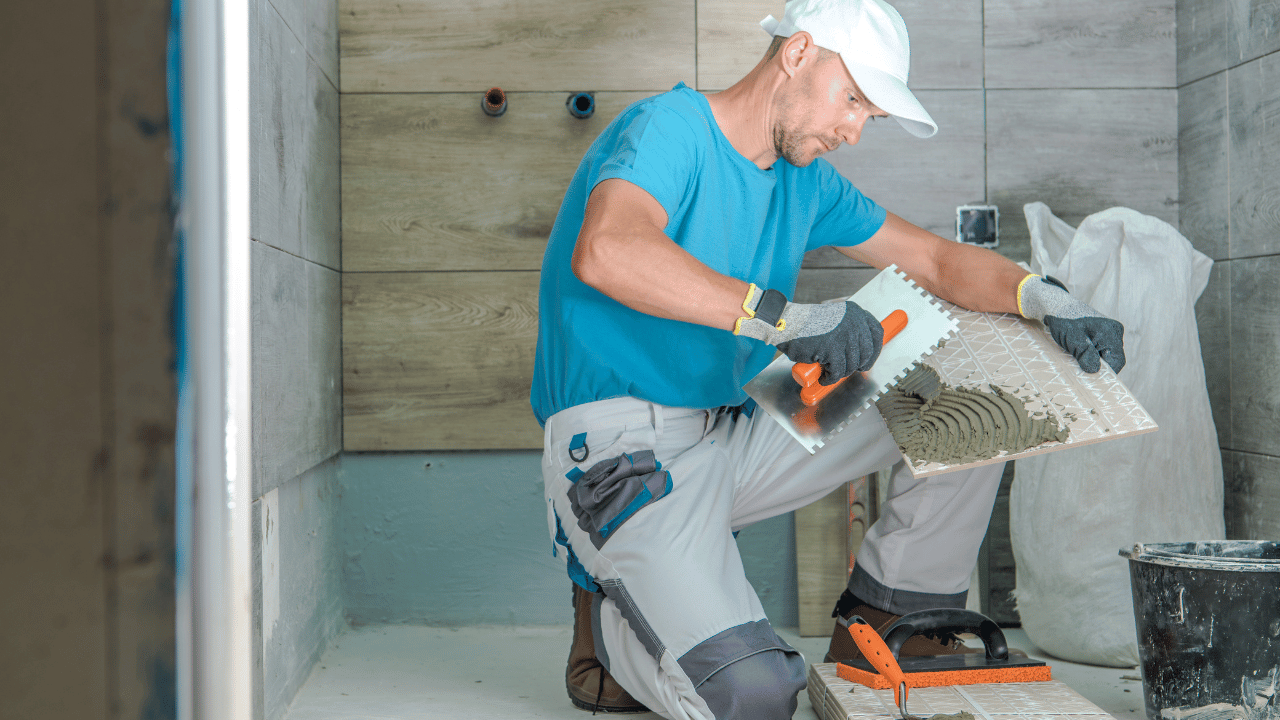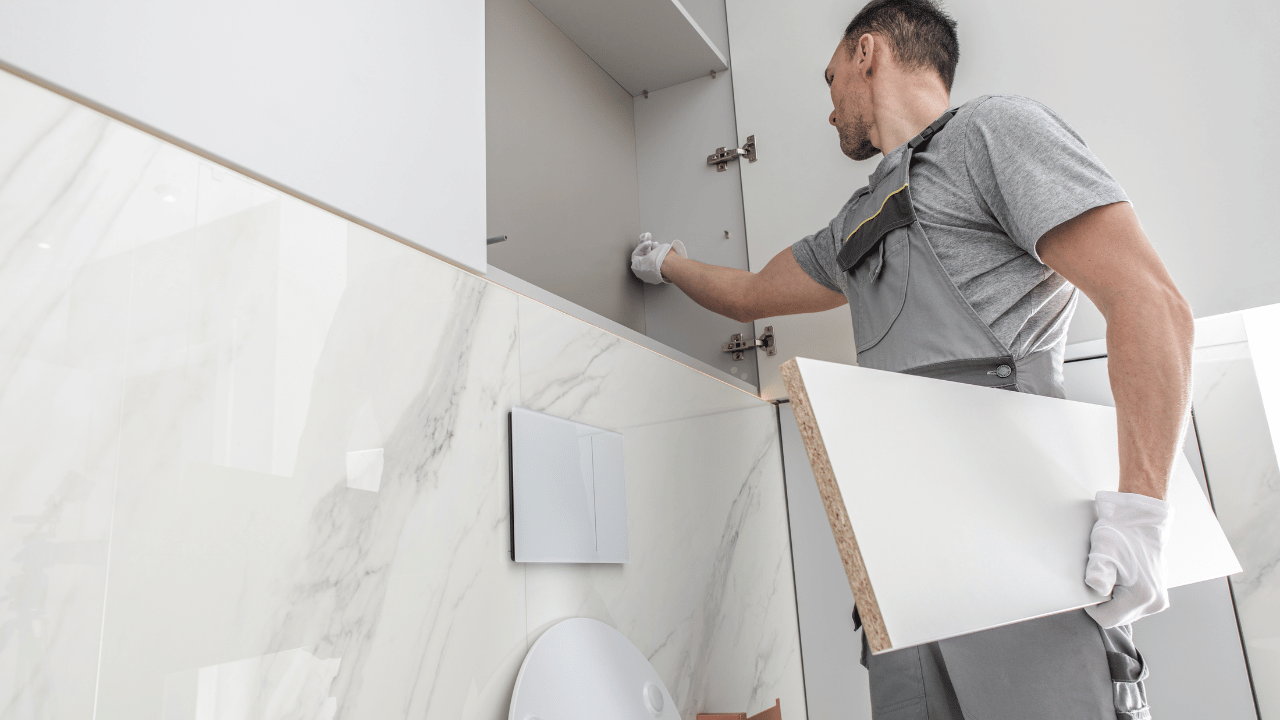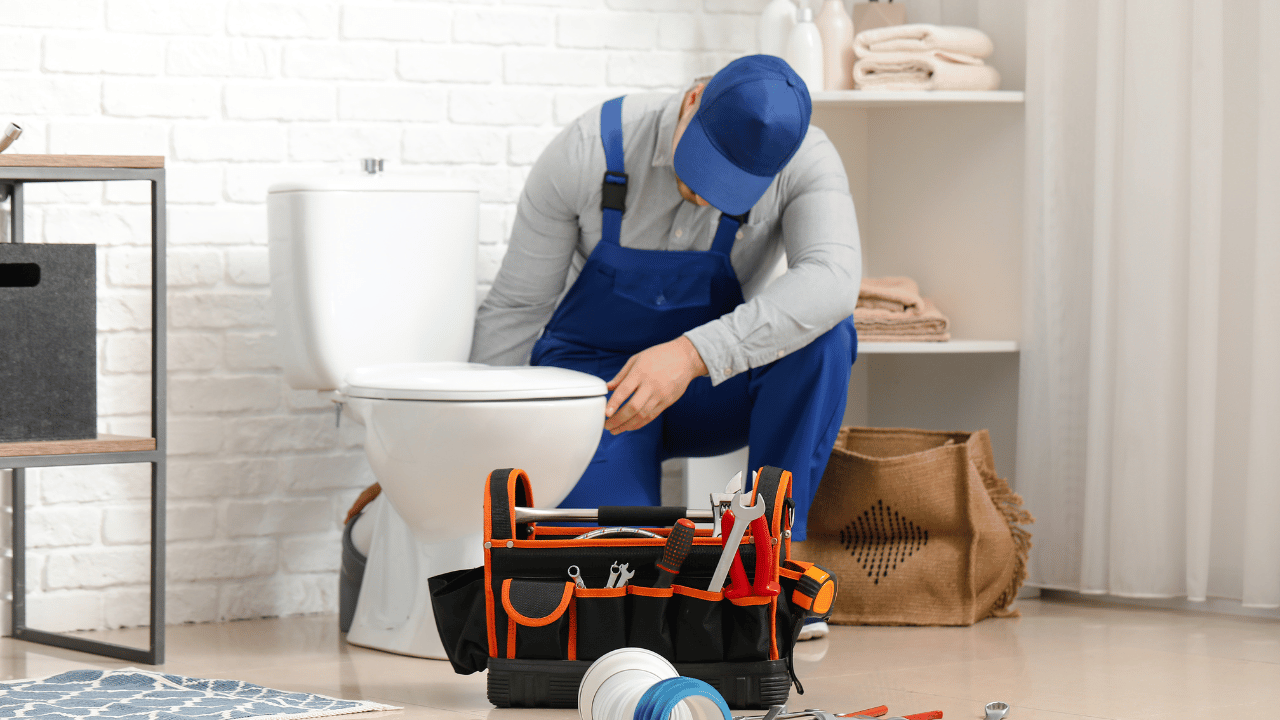Last Updated on October 21, 2023 by Pro Handyman Australia – Editorial Team
In the heart of every Australian home lies a space that deserves more than just a passing glance – the bathroom. Often underrated, this intimate corner has evolved from a mere functional room to a sanctuary of relaxation and self-care. Whether you’re aiming for a touch of luxury or maximising functionality, renovating your bathroom can significantly enhance your home’s comfort and value. Welcome to the “Bathroom Renovation Guide Australia”, where we unravel the essentials of revamping your bathroom, from design inspirations to budgeting tips, tailored specifically for the Aussie homeowner. Embark on this journey with us to transform your bathroom into a haven of serenity and style.
Understanding the Purpose Behind Your Bathroom Renovation
Before embarking on a bathroom renovation journey, it’s essential to understand and pinpoint your motivations. Reflecting on the aspects you appreciate in your current bathroom and the areas you wish to revamp will provide a clearer path towards your design goals.
Expected Duration for Bathroom Renovations
Typically, the build phase of bathroom renovations spans from 3 to 8 weeks. It’s not unusual for homeowners to invest a couple of months gathering inspirations, finalizing a design, and selecting the appropriate materials and fixtures. Engaging with a renovation specialist can be beneficial as they can align the project timeline and budget according to the homeowner’s preferences and constraints.

Effective Strategies to Economize on Your Bathroom Renovation
- Preserve the Current Layout: Altering your bathroom’s layout often incurs significant costs due to the intricate plumbing involved. Retaining the existing structure can lead to substantial savings.
- Balancing Luxury with Budget: While high-end fittings can quickly escalate costs, consider focusing on essential fixtures. Introduce a touch of luxury with a single premium “statement” piece to infuse elegance without breaking the bank.
- Implement Energy-Saving Measures: Incorporate timers for underfloor heating and towel rails. This not only conserves energy but also curtails your utility bills.
- Choose Experience over Cost: It’s pivotal to select a contractor based on their expertise and proven track record. Some builders may provide low quotations to outbid competitors, but this can often translate into compromised work quality. Engaging with reputable firms ensures transparent budgeting and efficient project management, minimizing potential delays and offering better value for your investment.
Assessing Bathroom Renovation Costs
1. Basic Bathroom Renovation: Costs between $26,000 – $39,000
With this budget, relocating major fixtures such as the toilet, vanity, shower, or bath is typically not feasible. However, there’s ample room for transformation by updating these fixtures, refreshing paint, and opting for stylish tiling and accessories.
2. Mid-Range Bathroom Renovation: Costs between $39,000 – $65,000
Most homeowners within this budget range desire a rearrangement of fixtures to enhance the functionality and aesthetics of their bathroom. Although this implies additional plumbing and electrical modifications, the resulting harmonious space is usually worth the investment. As a ballpark, renovating a bathroom with a new mid-tier bath, shower, vanity, toilet, lighting, ventilation, heated towel rail, underfloor heating, paint, and floor tiles (with wall tiles extending up to 1.2 meters) should cost between $26,000 and $28,000. An upscale makeover featuring ceiling-high tiles, an inclusive fit-out, and a tiled shower could range upwards of $35,000.
3. High-End Bathroom Renovation: Costs starting from $70,000 and above
Those with a substantial budget can aspire for a lavish spa-inspired ambiance. Investing in opulent fittings, like a statement claw foot freestanding bath, can elevate the room’s charm. Further, integrating smart home technology offers a futuristic dimension, allowing homeowners to customize aspects such as temperature, lighting, and entertainment. Stone tiles and underfloor heating are also sought-after elements for such top-tier renovations.
Determining Your Financial Allocation

Contemplating your designated budget for the bathroom renovation is fundamental. It will profoundly influence the extent of modifications and the final outcome.
Understanding Council Approvals for Bathroom Renovations
It’s crucial to recognize when a council’s approval is mandated for your renovation. The two primary circumstances necessitating official permission include:
- Structural Changes: If you’re considering major alterations like dismantling a wall between an isolated toilet and an adjacent bathroom, it’s essential to determine the structural implications. Particularly for houses like villas, bungalows, or those constructed before the 1970s, it’s wise to inspect the roof structure to ascertain if the wall plays a supporting role.
- Plumbing Adjustments: You won’t typically need a consent for replacing or relocating existing sanitary fittings like vanities, baths, showers, or toilets, as long as the overall count of these fittings isn’t increased. For instance, shifting a toilet to an adjoining bathroom or substituting a combined bath-shower with a standalone shower doesn’t demand approval. However, introducing a tiled wet area shower mandates official consent.
Consequently, in a majority of situations, renovating your bathroom doesn’t necessitate council consent.
Key Considerations for Bathroom Planning

Space Utilization It’s essential not to overcrowd the bathroom by including too many fittings, even if they seem to fit perfectly on paper. Ensure that dry areas, like in front of the sink, remain separate from wet areas, such as the space near the shower or bath. Wet feet while brushing your teeth are an avoidable inconvenience. Understand that existing plumbing may limit the positioning of certain features. It’s always wise to consult a professional if you’re uncertain about spatial arrangements.
Mastering the Layout Begin with the basics when envisioning your bathroom’s layout. Essential components usually include a toilet, sink with a vanity, and a shower. Once these are mapped out, assess the remaining space to accommodate desired additions like freestanding baths, extra storage, or heated towel rails.
Choosing Fixtures and Fittings When working with a dedicated renovation firm, you’ll often be guided through the process of selecting fittings that align with your style and budget, from a curated list of premium vendors offering competitive prices. However, if you have specific suppliers in mind, that preference can be accommodated.
Toilet Selection Your choice of toilet can influence both space and aesthetics. Decide whether you prefer a wall-mounted or floor-mounted model, and consider if you want the cistern integrated within the wall or attached externally. Such decisions will impact space allocation and renovation costs.
Opting for the Right Shower and Bath Your space will determine if you can accommodate both a shower and bath or need to prioritize one. A combined shower-bath can be a space-saving solution. If space permits, elevate the luxury quotient with a double shower or a freestanding spa bath.
Tile Choices Tiles are versatile and cater to varied tastes. A few suggestions:
- Limit the number of colors or styles within a bathroom to maintain cohesion.
- Prioritize safety by selecting non-slippery floor tiles.
- Adopt a consistent color theme across the home.
- Accentuate specific bathroom features using standout tiles.
- Larger bathrooms tend to complement larger tiles and vice versa.
- Beyond aesthetics, ensure the tiles are comfortable to touch and tread on.
Effective Lighting Before diving into aesthetic lighting solutions, prioritize fundamental requirements. Vanity and sink areas need proper illumination, achievable with an LED strip or light bar above the mirror. Classic designs might favor wall sconces or pendant lights. For a tranquil atmosphere, dimmable spotlights can set the mood.
Strategic Storage Solutions Even in a minimalist bathroom, functionality is paramount. Visible clutter can detract from the overall ambiance, so plan the placement and dimensions of storage solutions like cupboards and drawers. Embrace the idea of wall-mounted cabinets and utilize corners effectively for sink and vanity units.
Incorporating Technology Modern bathrooms can be augmented with technology for enhanced convenience. Consider integrating voice-controlled lights, Bluetooth-enabled shower heads, or LED temperature indicators in showers. Some mirror cabinets even feature touchless control panels to regulate LED lighting and other advanced functions.
Planning Your Bathroom Renovation: A Step-by-Step Guide
Mapping Out Your Preferences Before diving into the renovation process, it’s essential to introspect about what works for you in your current bathroom and what doesn’t. Initiate the process by creating a comprehensive list of elements you appreciate and those you’d like to change. To visualize your dream bathroom, curate a scrapbook filled with the features, fixtures, and fittings you desire. Adding tile samples and colour swatches can help you gauge how various textures and shades harmonize.
Assessing Current Infrastructure Take a moment to evaluate the existing placement of plumbing and electrical systems in your bathroom. Keeping these systems intact and working around them can substantially save on professional costs. It’s crucial to ensure that any new installations are compatible with the established inlets and outlets.
Accurate Measurements: The Key to Perfect Fit Accurately measuring your bathroom, including walls, windows, and doors, is imperative. These dimensions will provide clarity on the space available for any new inclusions. Remember, a bathroom can never have excess storage. Therefore, brainstorm innovative ways to incorporate additional storage solutions. Also, a vital point to remember is the need to waterproof bathrooms and other wet areas.
Finalising the Aesthetics Detailing is the key to perfection. Once the major elements are in place, consider the final aesthetic touches that will elevate your bathroom’s appearance. If your bathroom is on the smaller side, using larger tiles can create an illusion of space. Conversely, for those looking to accentuate specific details or add warmth to the space, mosaic tiles are an excellent choice.

Implementing the 60-30-10 Colour Rule Striking the right balance with colours can enhance your bathroom’s ambiance. Adhering to the 60-30-10 rule can be beneficial. In this approach:
- 60% of the room, like wall tiles and glazing, should represent the dominant colour.
- 30% can be a secondary, mid-range shade, suitable for the floor or cabinets.
- The remaining 10% can be a vibrant accent colour, introduced perhaps through linens or accessories.
Prioritizing Accessibility and Convenience Last but not least, think about the placement of essential fixtures like towel rails and toilet roll holders. The aim is to have these essentials within arm’s reach. Towels, for instance, should be positioned near the shower exit and, if possible, close to a heater for those chilly winter days. As for the toilet roll, it should be easily accessible when seated.
The Top Reasons to Renovate Your Bathroom

The bathroom is more than just a space for daily routines; it’s a sanctuary where you begin and end your day. Over time, however, this sanctuary may not offer the same comfort and functionality as when it was new. So, is it time to consider a renovation? Let’s delve into the compelling reasons why you should consider updating this essential space in your home.
- Increase Home Value One of the primary reasons homeowners opt for a bathroom renovation is the potential for a significant return on investment. A modern, updated bathroom can boost your home’s overall value, making it more appealing to potential buyers.
- Enhanced Energy Efficiency Today’s bathroom fixtures and appliances are designed with energy efficiency in mind. From water-saving toilets to LED lighting, renovating can reduce your ecological footprint and save money on utility bills.
- Improved Functionality Needs and preferences change over time. Maybe you require more storage, desire a double-sink vanity, or perhaps you’ve always dreamt of a walk-in shower. A renovation allows you to redesign the space to suit your current lifestyle.
- Safety Upgrades Over time, bathrooms can become safety hazards. Slippery tiles, a challenging tub to step into, or mould build-up can pose risks. Renovating offers an opportunity to implement safety features like non-slip floors, walk-in tubs, and better ventilation systems.
- Modern Aesthetics Bathroom design trends evolve, and what was once in vogue may now look dated. Renovating your bathroom gives you the chance to infuse contemporary design elements, creating a fresh and invigorating environment.
- Addressing Repairs Those persistent leaks, cracked tiles, or peeling paint won’t fix themselves. Sometimes, a renovation is necessary to address these long-overdue repairs, ensuring the longevity and safety of your bathroom.
- Personal Spa Retreat With the stresses of daily life, having a private retreat is more valuable than ever. Modern bathroom renovations focus on creating a spa-like atmosphere, ensuring relaxation and rejuvenation right at home.
- Increased Storage Space As families grow or lifestyles change, bathroom storage needs can increase. A renovation can cleverly introduce cabinets, shelves, and organizers to declutter the space.
- Enhanced Lighting The right lighting can dramatically change the ambiance of a room. Upgrading to better, adjustable lighting solutions can make tasks like shaving or makeup application easier and can set a relaxing mood for baths.
- Future-proofing for Aging If you plan to stay in your home as you age, a bathroom renovation can prepare the space for senior living, incorporating features like grab bars, seated showers, or wider doorways.
Deciding Between DIY and Professional Assistance
The Allure and Risks of DIY Renovations While the idea of a DIY renovation might be tempting due to potential cost savings, the results can sometimes be less than satisfactory. It’s not uncommon for professionals to be called in to rectify mistakes made during DIY attempts, which can end up costing more than initially projected. Thus, unless you possess the expertise in plumbing, tiling, and interior designing, undertaking a DIY project might not be advisable.
The Advantages of Professional Assistance For those seeking a seamless and hassle-free renovation, enlisting the services of a specialized renovation company is the way to go. Not only will you be saved from the intricacies of project management, but there’s also a high probability that you’ll obtain appliances and fittings at prices more competitive than retail. Your primary role would be to communicate your vision to the project manager and make selections from the array of fixtures, tiles, paints, and appliances they suggest.
Crafting the Perfect Bathroom Style
When embarking on a bathroom renovation journey, the myriad of style options can seem endless. However, it’s paramount to remember that effective design is rooted in functionality. Before getting swept away by aesthetic considerations, always evaluate the practical implications. For those in search of design inspiration, there are numerous resources available to ignite your creativity.
Avoiding Common Bathroom Renovation Pitfalls
When planning a bathroom renovation, it’s beneficial to be aware of some commonly encountered mistakes to ensure the end result is both functional and aesthetically pleasing. If you’ve chosen to work with a renovation specialist, they will likely guide you away from these pitfalls. However, it’s still helpful to be informed:

Navigational Concerns
- Ensuring adequate space when the door is open or when someone uses the sink is crucial to avoid obstructing the flow.
- While selecting a bathtub, ensure it’s proportionate to the room. An oversized bath may eat into the essential floor space required for safely stepping out.
Storage Solutions
- Placement of storage cabinets demands attention. Whether too low or excessively high, poorly positioned cabinets can be inconvenient. Always measure the area beforehand to determine the optimum height for installation.
Space Optimization
- Adequate spacing between fixtures is fundamental for ease of movement, undressing, and drying oneself. Cramped settings can lead to discomfort.
Wet Area Placement
- An improperly designed wet area can result in perpetual wet floors, posing both an inconvenience and a potential safety hazard.
Tile Selection
- In smaller bathrooms, opting for large tiles may not be the best choice. They can visually reduce the space and might not align well with the room’s dimensions.
Conclusion

Renovating a bathroom in Australia isn’t just about upgrading a space; it’s about crafting an oasis that resonates with our unique lifestyle, climate, and aesthetic preferences. This guide has walked you through essential considerations, from smart plumbing choices that reflect our water-conscious nation to design touches that echo Australia’s vast and varied landscapes. Remember, each bathroom, whether in a bustling city apartment or a serene coastal home, tells a story of its inhabitants. As you embark on this renovation adventure, ensure that the transformed space not only meets functionality and aesthetic goals but also captures the essence of your Australian haven. Happy renovating!
